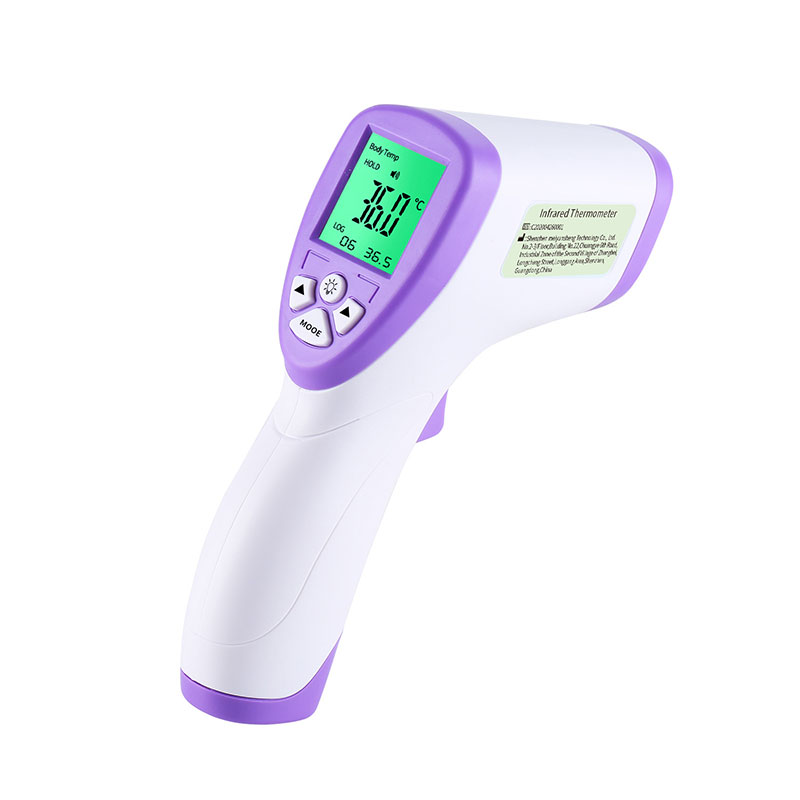Features and advantages of Non-Contact Infrared Thermometer
2023-10-17
Non-contact infrared thermometers, also known as IR thermometers or laser thermometers, are handheld devices used to measure temperature from a distance without physically touching the object or person being measured. They offer several features and advantages that make them popular in various applications. Here are some features and advantages of non-contact infrared thermometers:
1. Contactless Measurement: The most significant advantage of non-contact infrared thermometers is their ability to measure temperature without making physical contact. This feature is especially useful for measuring the temperature of sensitive objects, moving objects, or individuals who may be uncomfortable with contact-based measurements.
2. Quick and Convenient: Non-contact infrared thermometers provide fast temperature readings within seconds, allowing for quick and efficient temperature monitoring. This feature is particularly beneficial in busy environments such as airports, workplaces, schools, and healthcare facilities, where a large number of people need to be screened quickly.
3. Safe and Hygienic: Non-contact measurements eliminate the risk of cross-contamination and the spread of infectious diseases. There is no need to clean or disinfect the thermometer after each use, reducing the risk of germ transmission between individuals.
4. Distance Measurement: Infrared thermometers can measure temperature from a distance, typically ranging from a few centimeters to several meters away from the object or person being measured. This feature enables temperature screening in situations where physical proximity is not desirable or practical.
5. Wide Temperature Range: Non-contact infrared thermometers can measure a wide range of temperatures, from extremely high temperatures (such as in industrial settings) to low temperatures (such as for food safety applications). This versatility makes them suitable for various industries and applications.
6. Accuracy: Infrared thermometers are designed to provide accurate temperature measurements when used correctly. However, it's important to note that factors like distance, emissivity settings, and environmental conditions can affect the accuracy of the readings. Regular calibration and adherence to usage guidelines are essential for maintaining accuracy.
7. User-Friendly Design: Non-contact infrared thermometers are typically lightweight, portable, and easy to use. They often feature a clear and user-friendly interface, allowing users to read and interpret temperature measurements with ease.
8. Multiple Measurement Modes: Many non-contact infrared thermometers offer multiple measurement modes, allowing users to switch between Celsius and Fahrenheit units. Some models also offer features such as memory storage, adjustable emissivity settings, and audible alerts for high or low temperatures.
9. Non-Destructive Testing: Infrared thermometers offer non-destructive testing, meaning they can measure temperature without causing any damage to the object being measured. This makes them ideal for applications where the integrity of the object or surface needs to be preserved.
10. Versatility: Non-contact infrared thermometers find applications in various fields, including healthcare, food safety, HVAC systems, automotive, electrical inspections, industrial processes, and more. Their versatility makes them valuable tools for temperature measurement in diverse settings.
Non-contact infrared thermometers provide numerous features and advantages, including contactless measurement, convenience, safety, accuracy, versatility, and user-friendly design. They are widely used for temperature screening, monitoring, and control in various industries and environments.



